You’ve Been Taught the OODA "Loop" All Wrong. Here’s How It Really Works.
The most misunderstood concept in strategy—and the deadliest mistake your leadership team could be making.
They’re not faster. They’re not smarter. They’re just oriented, and your leaders are not.
Most leadership teams lose before they even make a decision.
Why? Because they’ve outsourced Orientation to a checklist.
They think success comes from making the right move.
But in the real world, the right move is worthless if your internal model of the world is wrong.
What shapes your perception?
What determines what counts as a signal?
What governs what feels “true” under pressure?
It’s not data. It’s not intuition.
It’s Orientation: your cognitive operating system.
And unless you’ve been trained to see it, refine it, and weaponize it, you’re already at a disadvantage.
You’ve heard of Boyd’s OODA “loop.”
You’ve seen the diagrams.
But you’ve likely never been taught what it actually is, or how it works in combat, business, narrative warfare, sports or leadership.
This isn’t theory. It’s tempo.
This isn’t military. It’s survival.
And if your competitors understand the real OODA “loop” sketch before you do, they’ll outlearn you, out-adapt you, and out-manipulate the battlefield you think you’re controlling.
This isn’t about getting better.
It’s about not being devoured.
This is how I teach the OODA “loop” sketch, in seven key points.12
Learn it now, before someone else uses it against you.
I. Orientation is a human’s cognitive operating system.
It shapes what we notice, value, believe, and think is possible. Observation, Decision, and Action are merely outputs of its current configuration. Orientation is not one box in a sequence, it is the nervous system of adaptation.
You can think of Orientation as a high-level model of the human brain: stuff goes in (observations, experience, signal); other stuff comes out (action selection, hypothesis formation). And in between? Judgment. Filtering. Repertoire. Projection. Pattern-matching. Mutation.
Orientation continuously processes new information through a many-sided, implicit cross-referencing system of projection, empathy, correlation, and rejection.3 This is how humans detect mismatches and adapt under ambiguity.
II. Implicit Guidance & Control is key.
Orientation shapes our observations through “implicit guidance and control.” We do not think our way through every decision. We feel our way forward, through trust, experience, cultural wiring, training, and an intuitive grip on context.
We live in the present moment. That’s when action happens. That’s when judgment must perform. And the most decisive moves are the ones you don’t need to consciously decide, because your orientation is already doing the work.
III. Decisions are hypotheses. Actions are tests.
You never have the full picture. You never will. Every decision is a working theory. Every action is an experiment in real-world complexity.
And here’s the key: you don’t stop and make a decision, then pause again to evaluate it. That’s how you lose. The enemy is trying to make you freeze. Don’t do their job for them. Keep moving. Keep testing. Keep adjusting.
Strategy is not about certainty. It’s about continuous experimentation under fire.
IV. Feedback loops rewire orientation. This is reorientation.
Friction, failure, and surprise don’t loop you back, they change you. All feedback flows directly into Orientation. That’s how you evolve judgment.
If you’re not reorienting, you’re not orienting.
This is not repetition, it’s mutation. Signals, results, and mismatches hit the orientation system directly. Your perception reshapes. Your actions shift. Your predictions improve. And those changes alter the next round of feedback in return. It’s a feedback flow, not a cycle.
V. The OODA “loop” sketch is not a loop! It’s an illustrative abstraction.
It’s not a process to follow. It’s a window into how human judgment evolves under pressure. The sketch maps nonlinear, recursive flows of energy, information, and adaptation.
Think of it more like a storm system than a checklist, a constantly shifting pattern of fronts, flows, and forces.
What does it mean to be “far from equilibrium”? Put simply: a system in balance is a system at risk. A fighter jet in equilibrium is a target. Living systems thrive through continuous imbalance, adaptation, and turbulence. That’s the arena where Orientation operates.
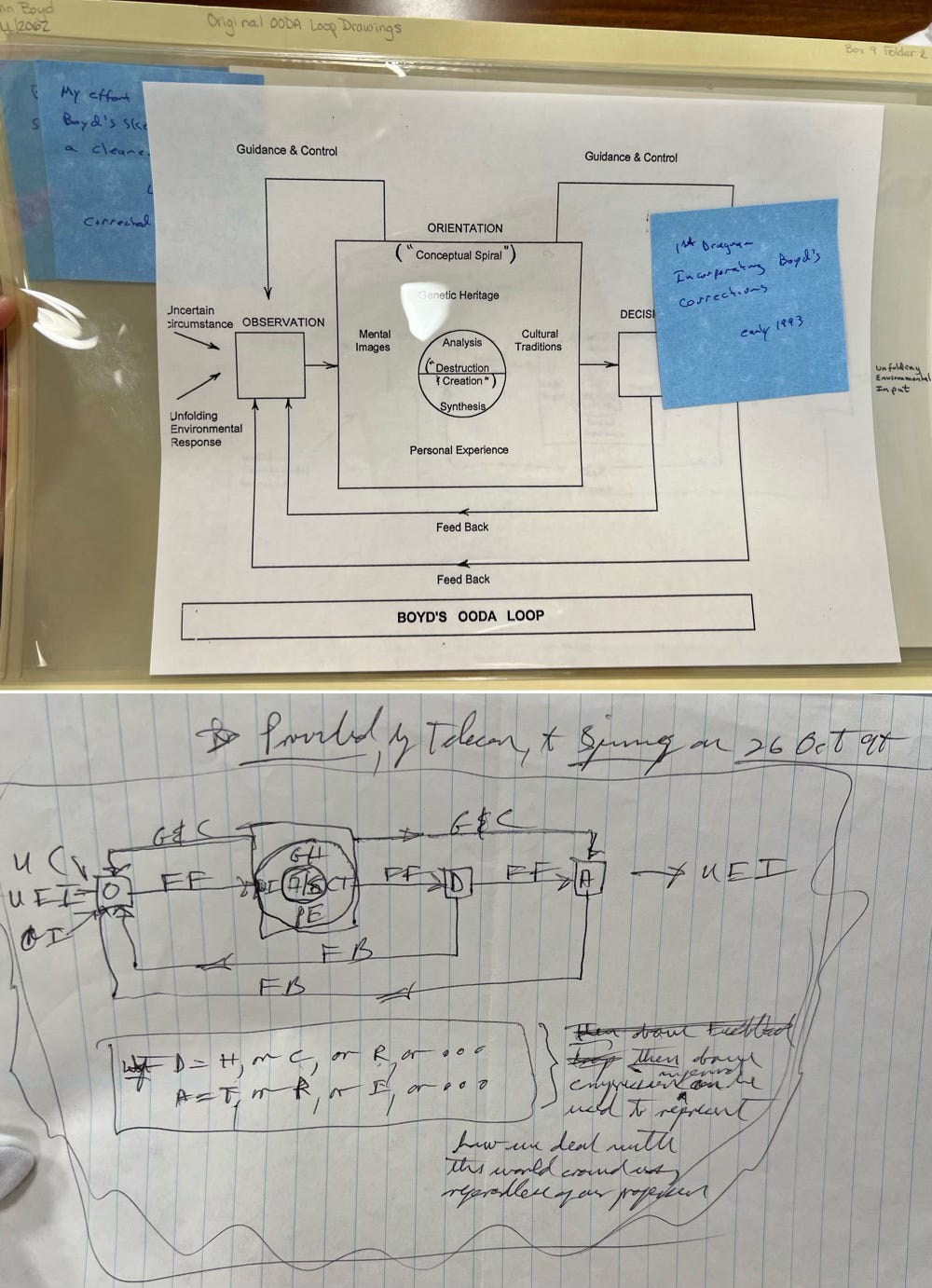
VI. Continuously reorient quicker than your competitors while at the same time acting more effectively.
Victory doesn’t come from picking between speed and effectiveness. It comes from generating a live system where quicker Orientation leads to more effective Action, and vice versa.
There’s no tradeoff here. There’s feedback.
Even weak actions, if well-timed while your opponent is disoriented, can have devastating effects. A small move in the right moment can collapse a more powerful enemy. That’s the law of mismatch advantage.
Quickness and effectiveness are not rivals. They are reflections of the same underlying system.
Quicker orientation ⇄ Effective action
VII. Any linear, decision-centric framing of OODA is self-defeating and inevitably fatal.
To treat the OODA “loop” as a checklist is to intentionally blind yourself.
That framing builds brittle systems that collapse under pressure. You won’t be able to see changes in the environment, much less respond to them. You’ll be slow, wrong, and dangerous to your own side.
OODA is not a formula. It is a fight for cognitive survival.
Final Strategic Takeaway:
The OODA “loop” sketch is a living abstraction, a dynamic model of how Orientation generates perception, decision, action, and adaptation in conditions of stress, ambiguity, and conflict.
It is not a cycle. It is a “far-from-equilibrium” system, a vortex of learning, judgment, and disruption in motion. You win not by having the best plan, but by seeing the shift first, adapting faster, and acting from a system that remains alive when others collapse.
Reorientation happens at all levels:
Tactical — within your current frame (e.g., enemy deploys better tank)
Operational — shifts that change your frame (e.g., enemy deploys drones)
Strategic — paradigm shocks (e.g., enemy invents death ray)
Your job is to detect what level you’re in, and then to adapt accordingly.
In order to improve your capacity for free and independent action:
Continuously reorient quicker than your competitors while at the same time acting more effectively.
This is how we survive on our own terms, adapt, and thrive.
OODA is not a loop. It’s your edge or your trap.
The sketch isn’t a cycle. It’s not a process.
It’s the live system of perception, judgment, and adaptation.
Misread it, and you build brittle, linear orgs that freeze under change.
Master it, and you act while everyone else is still orienting.
Here’s the truth your competitors won’t see coming:
The linear, decision-centric “OODA Loop” sold by the Merchants of Certainty—with their slides, slogans, and war stories, is exactly what you want them to operate with.
It’s rigid. It’s slow. It’s already obsolete.
It blinds them to the fight they’re in.
You win by making orientation your core operating system—so you can reorient quicker and act more effectively than anyone else in the arena.
ACTION STEPS
-If you lead a team, train them with the authentic OODA “loop” sketch.
-If you run a company, build systems that rewire faster than the world shifts.
-If you’re serious about adaptation, learn this before it’s used against you.
Share this with your team and/or forward this to the most adaptable leader you know.
Let the Merchants Of Certainty sell certainty. You make the decision to operate in reality.
You’re either reorienting or you’re irrelevant.
Understanding Boyd's Real OODA Loop: Deconstructing TEoWL with Chet Richards
John Boyd’s OODA Loop—Observe, Orient, Decide, Act—is widely recognized as a decision-making framework, but its true depth and complexity are often misunderstood. In a recent podcast discussion hosted by Ponch and Mark, with guest Chet Richards—a close collaborator of Boyd—the trio unpacked the "real" OODA Loop as presented in Boyd’s final work,
More Than a Fighter Pilot: How John Boyd Threatens the System
Rebuild your mind before someone else builds it for you. Subscribe now!
Special Thanks to Chet Richards for his guidance and advice on this article.
These are primary sources, references and influences I use to reinforce this approach to teaching OODA “loop” sketch:
Destruction and Creation by John Boyd
Conceptual Spiral by John Boyd
Organic Design for Command and Control by John Boyd
The Essence Of Winning And Losing by John Boyd
The Essence Of Winning And Losing - Deconstructed by Chet Richards
“Orientation is an interactive process of many-sided implicit cross-referencing projections, empathies, correlations, and rejections that is shaped by and shapes the interplay of genetic heritage, cultural tradition, previous experiences, and unfolding circumstances.” - John Boyd, Organic Design for Command and Control, slide 15


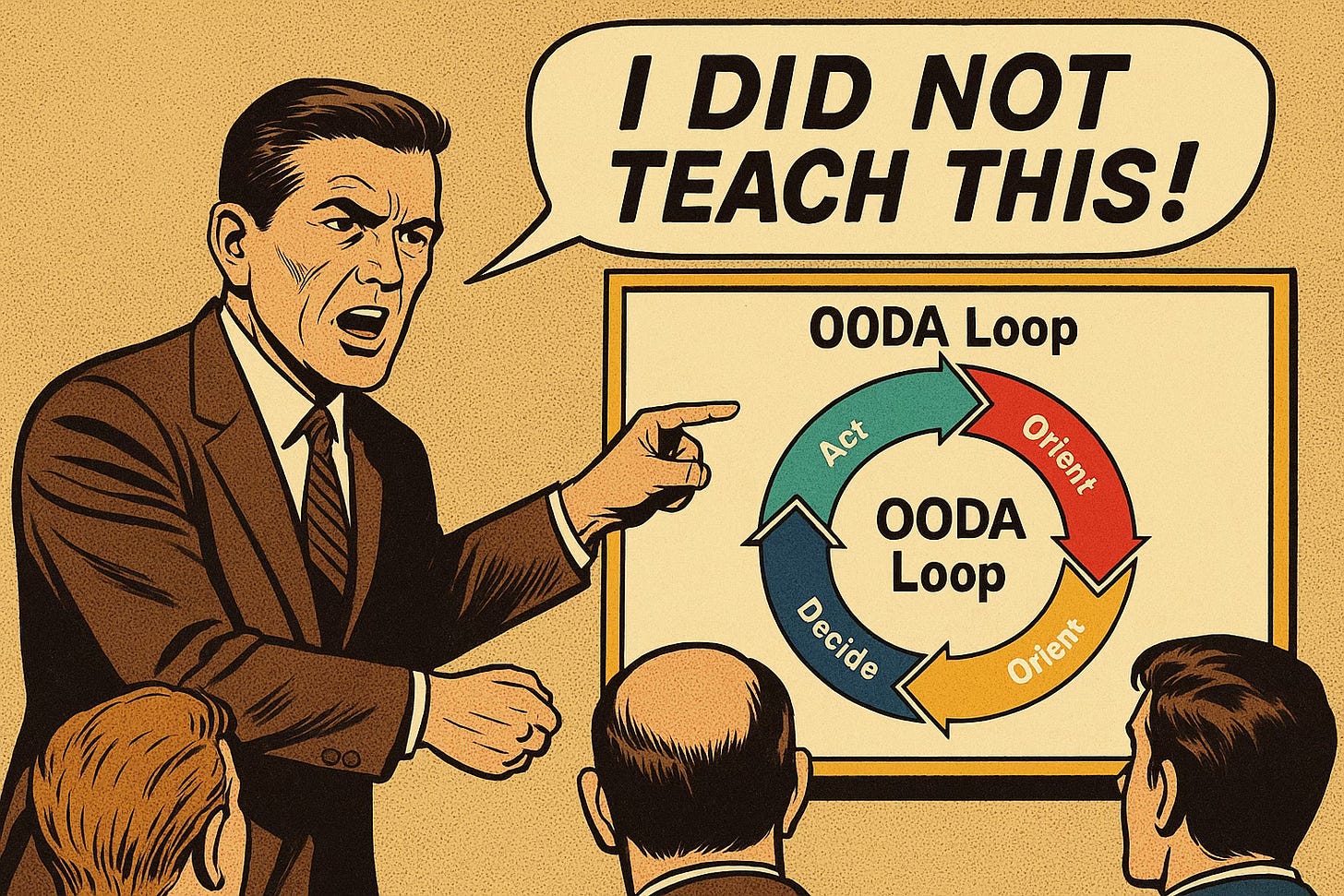
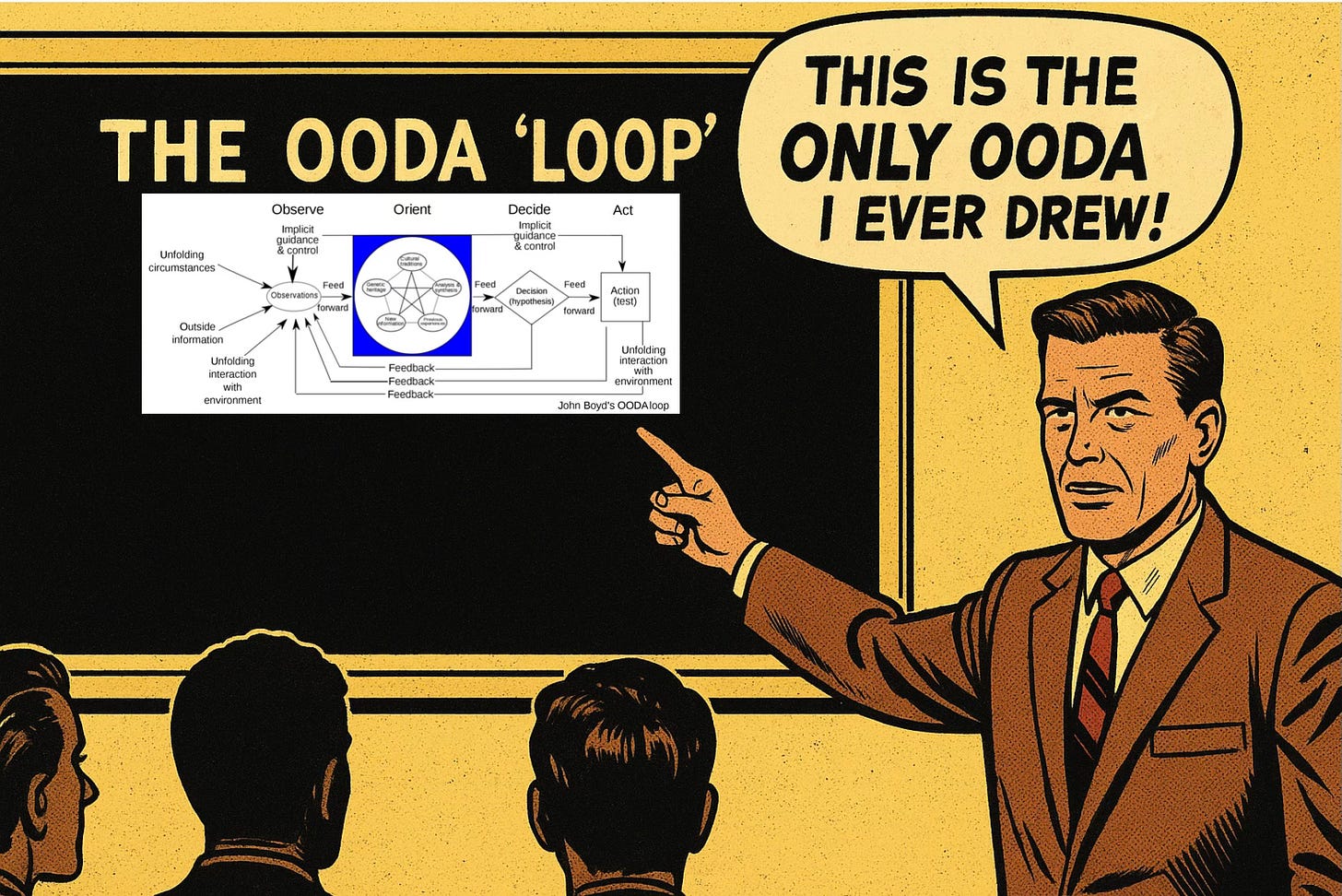
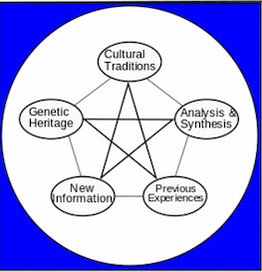


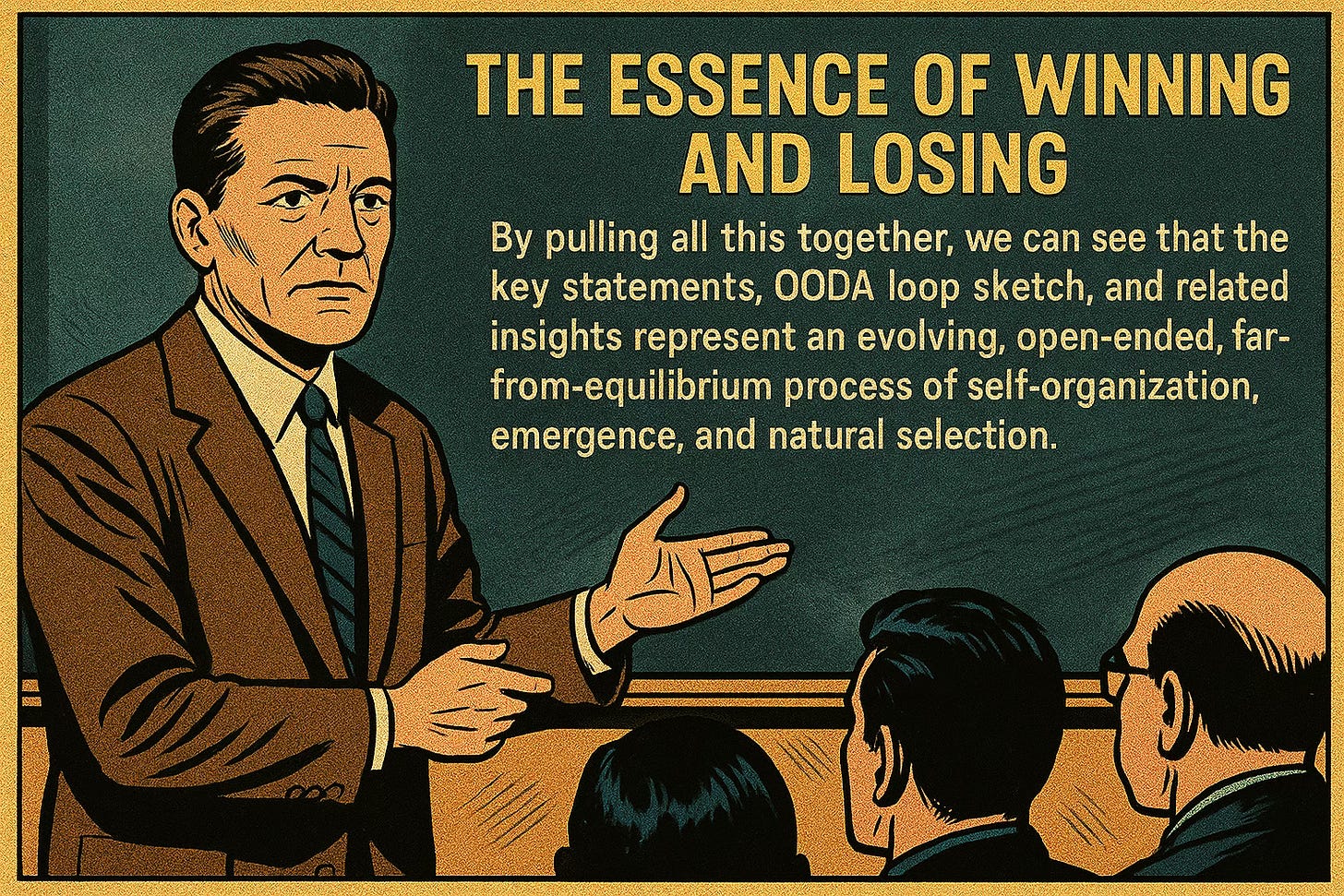
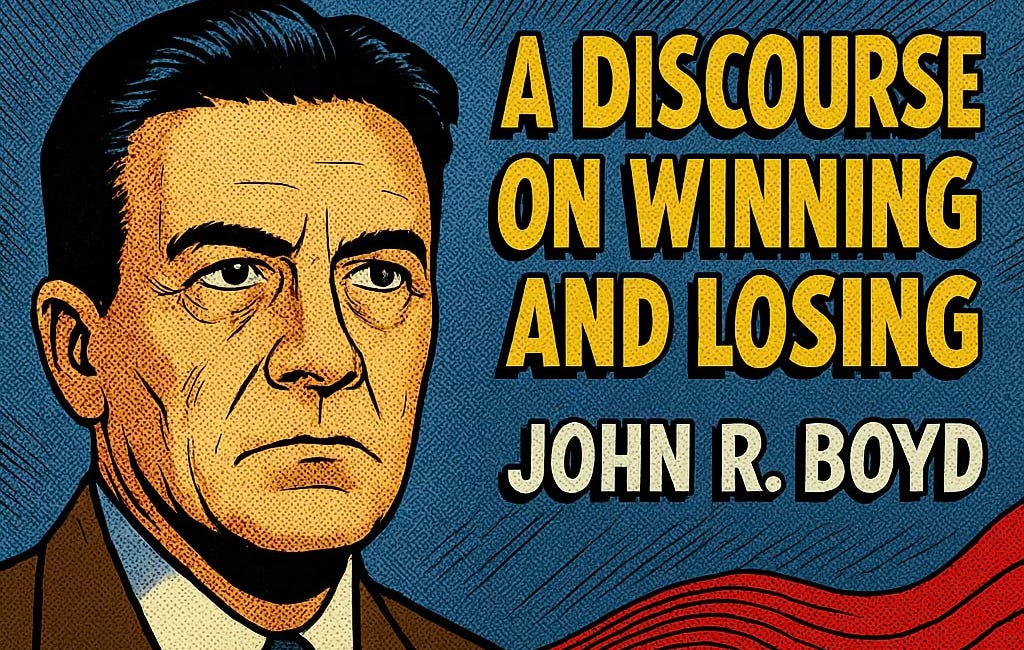

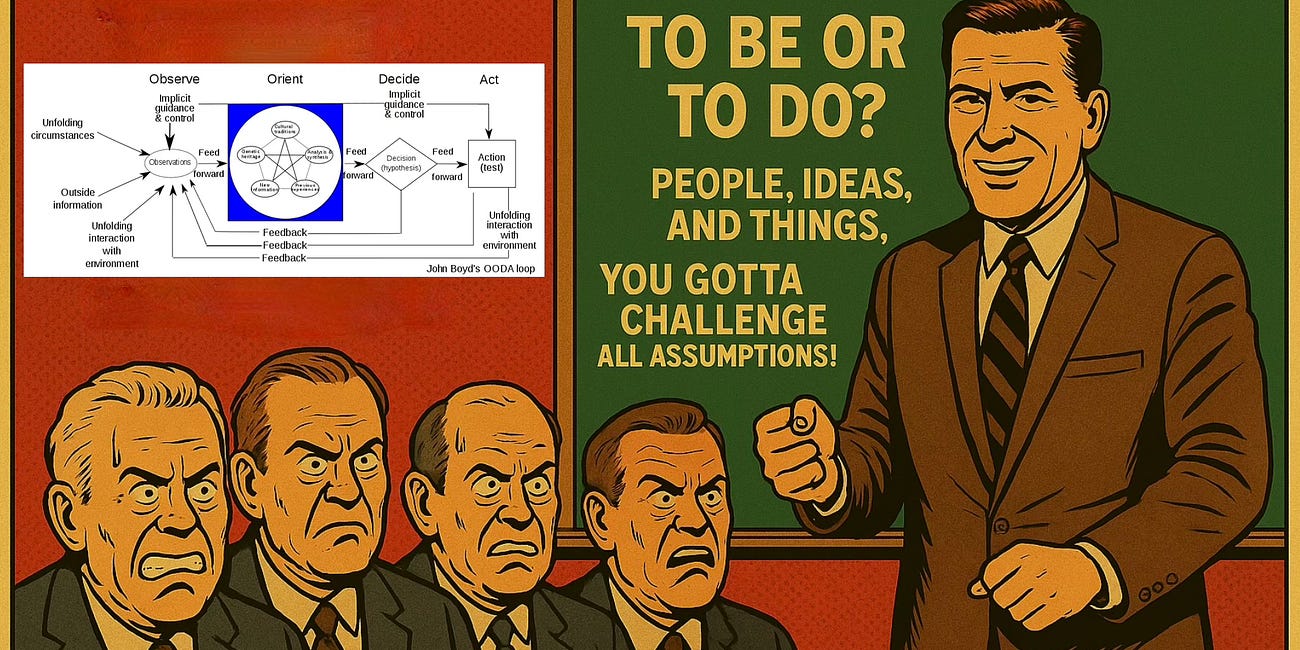
Fantastic post. Saved for future reference. Would be fun to take one of your classes